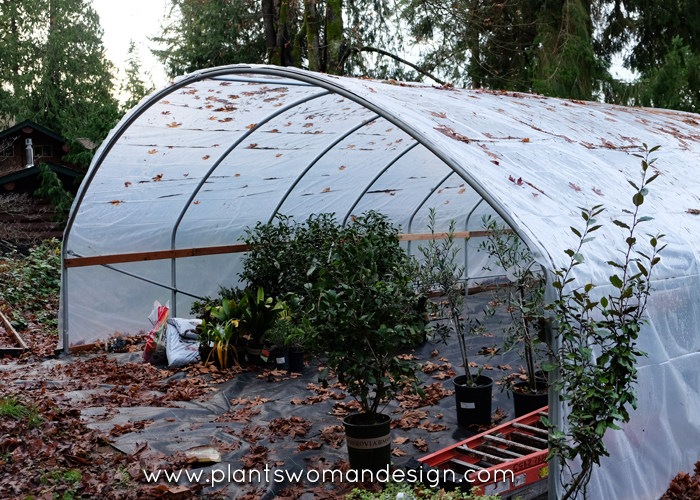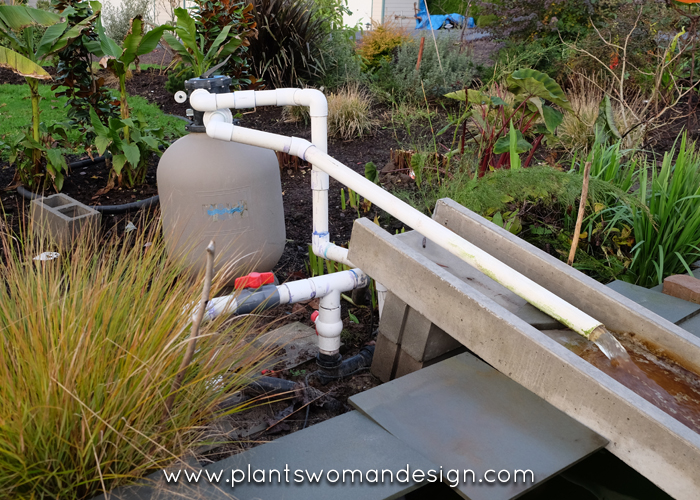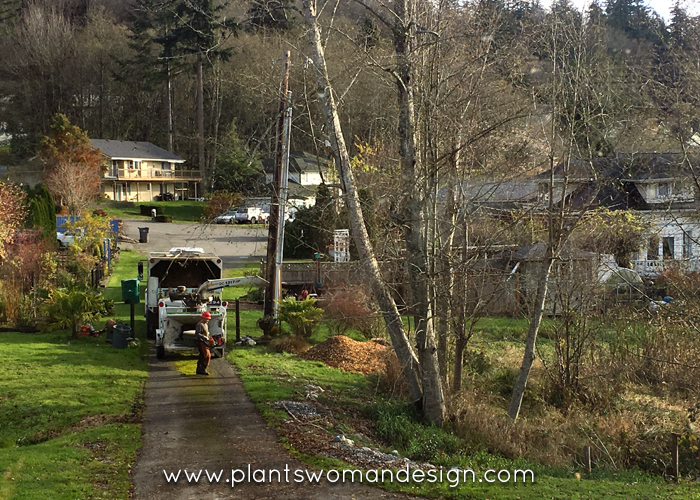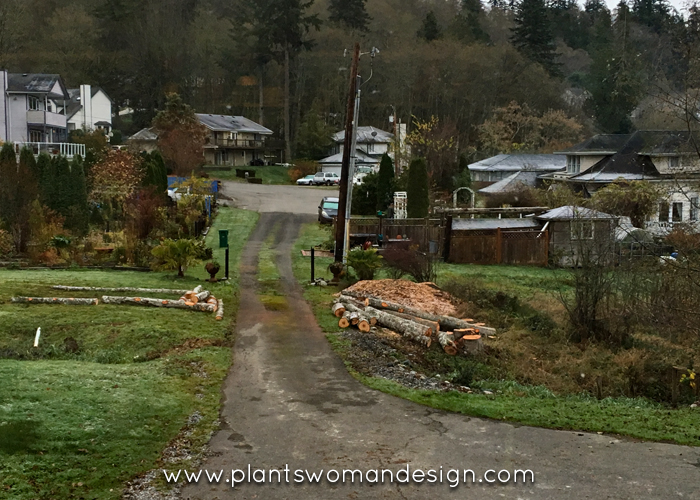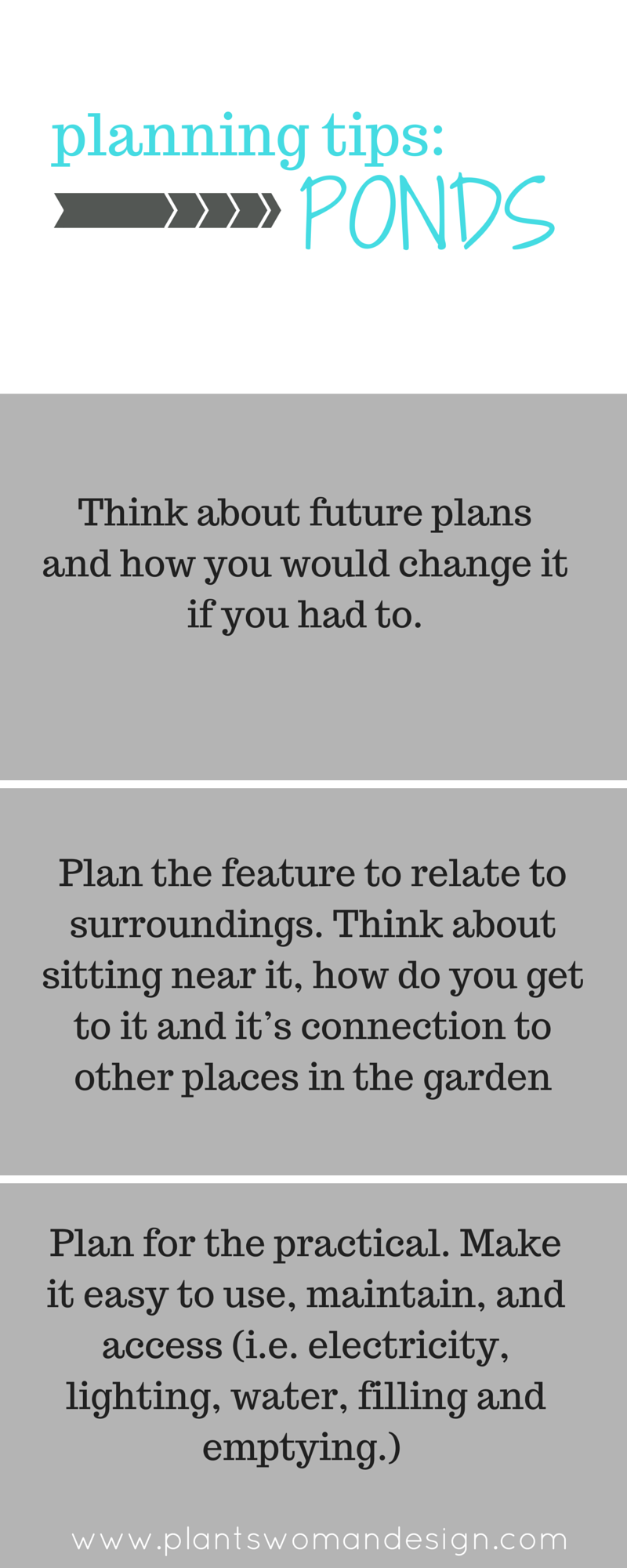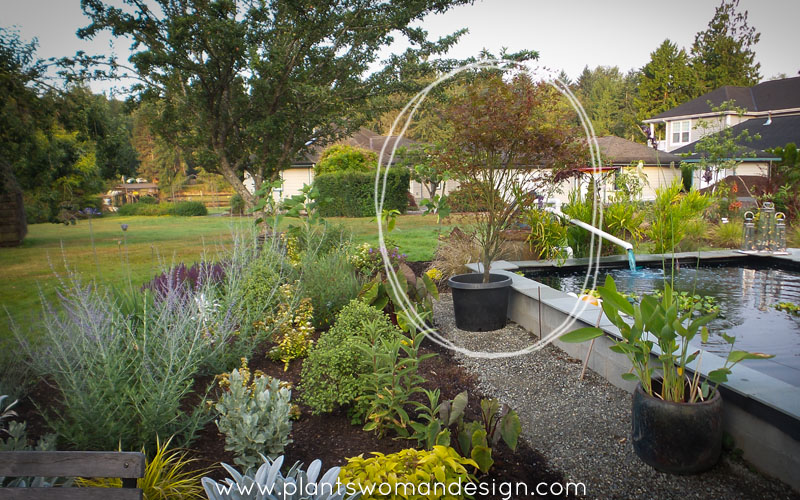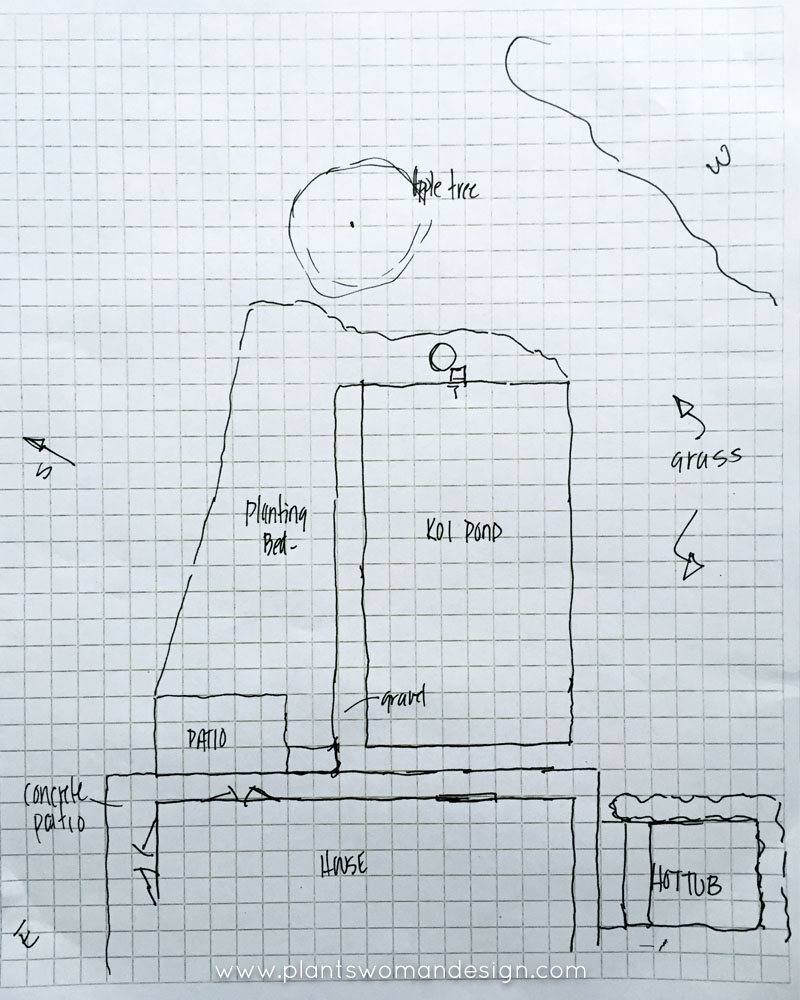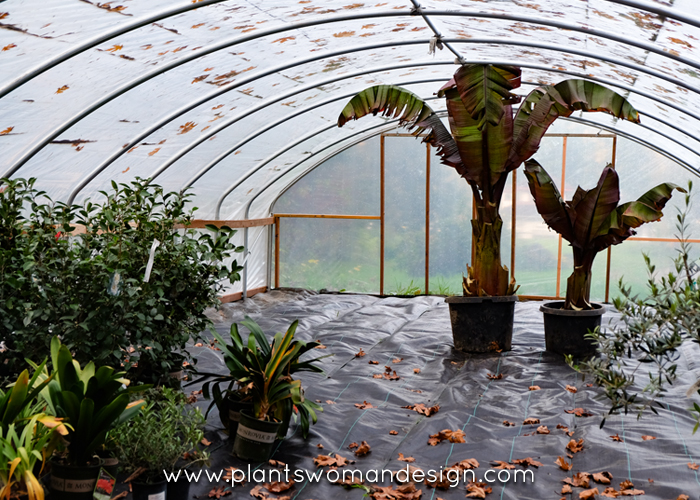
by Susan | Nov 26, 2016 | gardening
It has been warm still in the Pacific Northwest, last week still in the upper sixties and warm at night too. Two days of light frost had no effect on the garden except the tomatoes. Leaves are still on trees and things are not completely dormant yet. But Winter is coming and winter is the best time to work on the bigger projects in the garden.
My list this winter includes removing dead and dying alder trees, rebuilding the larger shed at the top of the property, and moving the big greenhouse and getting it ready for moving plants inside. The koi pond needs some re-plumbing work and a more UV filters installed to keep algae down next year. The stone is waiting to be installed on it with more stone ready to be installed on the greenhouse foundation.
Wow, that seems like a lot!
OH yeah, and get the winter Veg garden better hoops for protection, moving some plants that need more room, put in a pump to pump water out of the stream for irrigation next year, and create a new bed for screening from upper neighbors.
Looks like a busy winter.
This week I had 6 trees downed next to the driveway. They were mostly dead with very little branching left and few leaves. After every windstorm the ground was littered with debris and big limbs. The stream runs through this area and was constantly clogged with debris. It is much more open now and ready for some trees. A craving for Katsura trees was satisfied this year in the upper pond garden but the craving for an October Glory Maple could be satisfied here. Look for an upcoming post on trees.
Inside projects include a new mosaic water dish for birds, labels for new plants that went in this year with only nursery tags. These usually get lost quickly in my garden so I use a galvanized metal tag in the ground with a plastic tape on it from a label maker. Both the botanical and common name go on it along with date of planting and nursery where it was purchased. Many times when writing a blog post, taking pictures, or looking for a specific plant for a customer the tag is so vital. Even though I have a garden journal that has all the same information it is by date so I have to remember when I planted it in to narrow down the many pages to find the information.
Mulch is also needed in several areas to combat weeds. This is the best time to do a big garden clean up, weeding and mulching for the year. Some plants will need extra protection that mulch can help with. Agapanthus, crinum, and leonitis are such plants in my garden.
What do you have on your winter projects list?

by Susan | Jul 24, 2015 | LB Tutorial: Design Challenge
Gardening is not a static thing but always evolving and changing. Sometimes aspects of the garden present themselves as challenges when least expected. Often planning and planting go hand in hand but situations change and the plan needs to be improved upon.
My Koi Pond is one of those.
The urgency to build the pond and get the Koi moved dictated a position out of the way of possible remodel (planning for the future). It also needed to be close to the house because the Koi are actually pets that need to be related to, fed and even touched. They would not like to be tucked into an out of way place (relational site location). They must also be protected from predators so close monitoring is also essential (practical site location).
One thing that has become important is the need for controlling the algae in the pond. The sun is intense in this open location so the water temperature is warm and the algae love the light and the warm water. There are several ways to handle the algae problem in any pond such as bacterial filters (called bead filters), UV light treatments, and chemical treatments. However, one of the easiest and most effective is shade. By shading the water the light is blocked and water is cooler thus helping to control the growth of algae. The bead filter, UV Filter and chemical treatments are in use but right now the pond is still the color of pea soup and suspended algae is obscuring the fish!
My recent visit to the new garden of Little and Lewis on Bainbridge Island confirmed that shade was probably best solution. They have a small pond with fragrant water lily and pitcher plants (get Botanical name) located in the courtyard with overhanging bamboo, Tasmanian Tree Fern and Abutilon. Crazy non – natives that required protection and a heater in the pond but that also create shade that keeps algae at bay.
The challenge now is how to create lush shade near the Koi Pond without blocking the view to the water. Granted there is a certain aesthetic that can be used in creating the necessary shade and also shaping a more focused view instead of wide-open view. The same principal is seen in tree pruning called ‘limbing up’ in which the gardener trims off lower branches so the focal point is cast between the tree trunks. This gives you a more interesting view by framing it and focusing the eye towards it.
Plantings at the end of the pond will help eventually but will take a while to grow into the actual shade needed to be effective. Here is a first photo of a Japanese maple in position towards the southeast.
This is located in front of the view so it will block some view, and provide shade from the morning sun.
I would love to hear the thoughts of other Gardeners out there. Share your ideas and insights on the Challenge. Here is a layout of the space. Let me know what you think!!
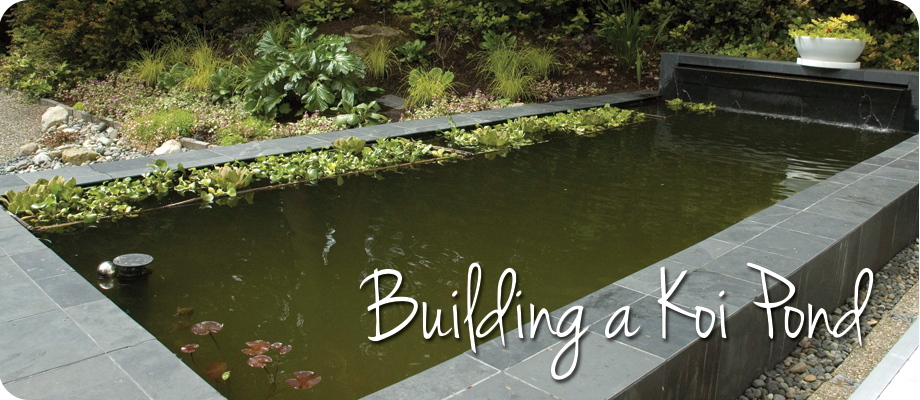
by Susan | Sep 13, 2014 | Plantswoman Design, pond
Often times customers will ask us to do something we have never done before. Of course I always say “YES!” Then my crew and I will do a little pow-wow and figure out how to do it. Occasionally we will tell our customer ‘this is new to us but we will do it for cost and you get to be our experimental model’. They are excited to see how we do it and we are excited to do something new. Most of the time we do a ‘mock up’ or try it for display. We want to be sure that something works before we put it into a landscape. We are always learning and experimenting to perfect our craft.
For today’s case we are building a koi pond. My babies moved with me and they needed a new home. They have spent the last month in a 300 gallon stock tank.
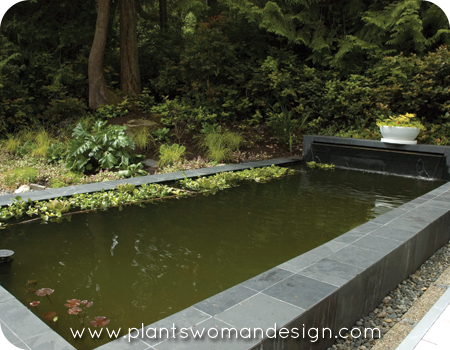 We have a customer that we helped with a koi pond for a couple of years ago. She had concrete planters in the back garden. We blocked one off and left it as a planting bed. The other bigger portion we dug out, plumbed and created a pond with a waterfall. In her project we used a spray on poly urea liner. The fabric was laid and the liner was sprayed against the wall and over the fabric. The wall was capped with black slate and it looks beautiful.
We have a customer that we helped with a koi pond for a couple of years ago. She had concrete planters in the back garden. We blocked one off and left it as a planting bed. The other bigger portion we dug out, plumbed and created a pond with a waterfall. In her project we used a spray on poly urea liner. The fabric was laid and the liner was sprayed against the wall and over the fabric. The wall was capped with black slate and it looks beautiful.
Here is the Slate Pond on Bainbridge Island before. It was concrete block and dirt.
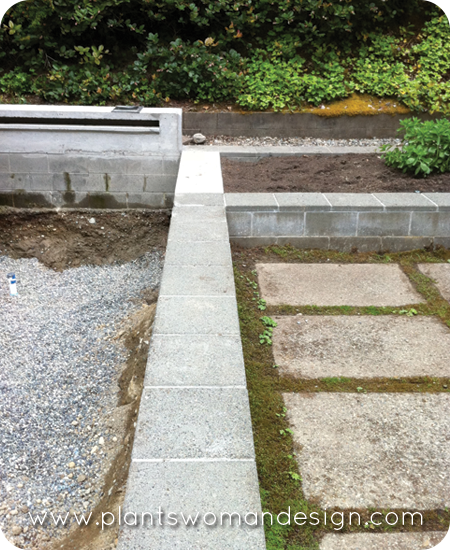
 Here is the finished koi pond…
Here is the finished koi pond…
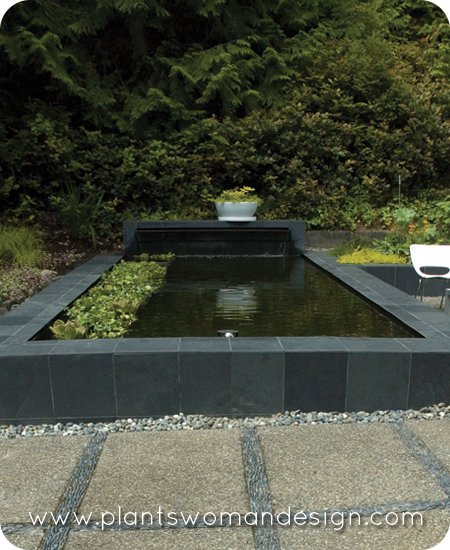
 To start the koi pond at the beach house we brought in the big diggers to start and then finished off by hand.
To start the koi pond at the beach house we brought in the big diggers to start and then finished off by hand.

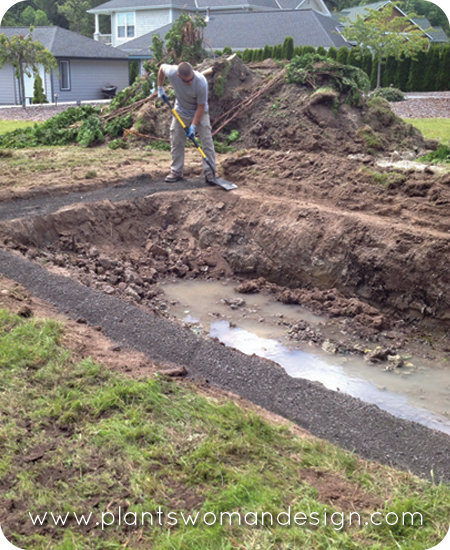 For my koi pond we are using a rubber liner. The company that does the spray on was too busy spraying ponds for shrimp farming (who knew?). The challenge here is to get the liner to stick to the concrete block we used. We need to get the liner to attach to the concrete block and then we will put the stone on the top. We tried liquid nail (a construction glue) but it did not work. I went to a fabulous store called Atlas Supply where they have all types of adhesive! They are experts so they asked about what I was doing and gave me just the right product. I used a structural adhesive called M-1 and that did the trick. The liner is laid down and stuck to the top of the wall. Now time to fill the pond and move the fish.
For my koi pond we are using a rubber liner. The company that does the spray on was too busy spraying ponds for shrimp farming (who knew?). The challenge here is to get the liner to stick to the concrete block we used. We need to get the liner to attach to the concrete block and then we will put the stone on the top. We tried liquid nail (a construction glue) but it did not work. I went to a fabulous store called Atlas Supply where they have all types of adhesive! They are experts so they asked about what I was doing and gave me just the right product. I used a structural adhesive called M-1 and that did the trick. The liner is laid down and stuck to the top of the wall. Now time to fill the pond and move the fish.
When koi move they get a little freaked out and think that everything is out to get them. They jump and sometimes make it right out of the pond. I lost one that way because he jumped at night and I didn’t find him until the morning which was too late. Another one jumped during the day and I found him outside still breathing. He had been out a long time but I dumped him back in the tank and he survived and is happy. When I moved them to the bigger pond I put a piece of netting over the top to keep them in and predators out. That was in place for a couple of weeks and then I changed it to a wire cross wire system. I want to keep eagles and osprey’s from diving into the pond to fish for their supper. Unfortunately it did not keep this curious heron from investigating.
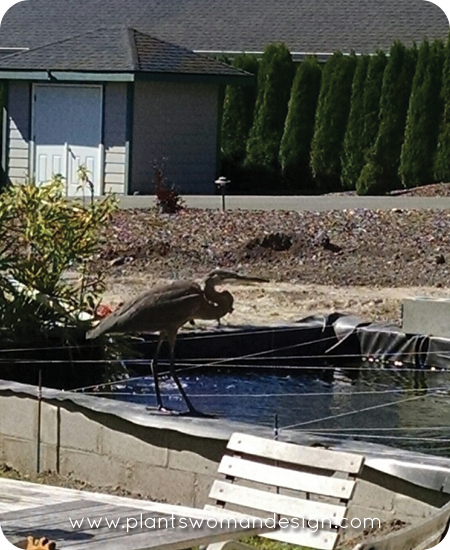 This weekend I will set up a wire around the perimeter to keep them from landing on the edge of the pond. I’m still working on the top and edges of the pond and will keep you posted on the continuing saga.
This weekend I will set up a wire around the perimeter to keep them from landing on the edge of the pond. I’m still working on the top and edges of the pond and will keep you posted on the continuing saga.


